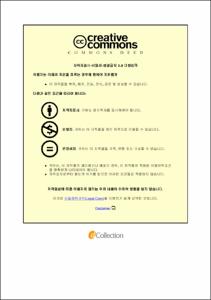품질 및 경영기법을 활용한 조직의 상호의존적 공동책임 아키텍처 설계
- Alternative Title
- Designing a collaborative responsibility architecture based on organizational interdependency using quality and management techniques
- Abstract
- Traditional cause-and-effect techniques, of which approach depends on problem solving in the perspective of 4M or 6M (Man Power, Method, Material, Measurement, Machine, Mother Nature), have been mainly applied into the manufacturing realm to implement Failure Mode and Effect Analysis for efficient quality control. However, they limit in solving multidisciplinary problems due to their closeness dedicated to local problems within the relevant department. They also cause the complexity in applying their solutions into integrated management systems where require concurrent and parallel analysis along with harmonious consensus across multiple departments. To overcome these limitations, this paper proposes an interdependent co-responsibility architecture for efficient organizational operations through cause-and-effect-based quality management techniques. The proposed architecture is designed to enhance interdependency across departments by integrating the 6M analysis with International Organization for Standardization (ISO) 9001, which pursues the sectoral interconnectivity and the establishment of communication systems. For such purpose, the present work first conducts expertise survey to validate the necessity of interconnectivity for performing efficient and effective organizational operations. Second, it performs the conformance check of the usefulness of the integration of the traditional 6M analysis with the ISO perspective. Based on the expertise survey and the conformance check, it third proposes the architecture that can be used to diagnose, adjust and update internal organizational operations with consensus but without conflicts in communications.
- Issued Date
- 2018
- Awarded Date
- 2018. 8
- Type
- Dissertation
- Keyword
- FMEA Weighted Ishikawa Diagram Interdependent Co-Responsibility Architecture Concurrent & Parallel System Fractal Organization Team of Teams Organizational Structure
- Publisher
- 부경대학교
- Alternative Author(s)
- Min su, Song
- Affiliation
- 부경대학교 기술경영전문대학원
- Department
- 기술경영전문대학원 기술경영학과
- Advisor
- 신승준
- Table Of Contents
- 목차 i
초록 iv
I.서론 1
II.이론적 배경 및 선행연구 5
1.이론적 배경 5
2.선행연구 8
2.1 일반적인 FMEA 적용 8
2.2 FMEA 모델의 확대 11
2.3 FMEA 함정의 탈출 14
III.연구 방법 및 사례분석 22
1.연구 방법 및 모형의 타당성 22
2.설문조사의 결과 30
3. 현장관리 사례분석 31
IV.아키텍처 설계 연구 제안 39
1. 아키텍처 설계 개요 39
2. 아키텍처의 검증 및 확장 47
V.결론 및 시사점 53
참고 문헌 61
부록: 설문지 71
감사의 글 80
- Degree
- Master
- Files in This Item:
-
-
Download
 품질 및 경영기법을 활용한 조직의 상호의존적 공동책임 아키텍처 설계.pdf
기타 데이터 / 1.89 MB / Adobe PDF
품질 및 경영기법을 활용한 조직의 상호의존적 공동책임 아키텍처 설계.pdf
기타 데이터 / 1.89 MB / Adobe PDF
-
Items in Repository are protected by copyright, with all rights reserved, unless otherwise indicated.